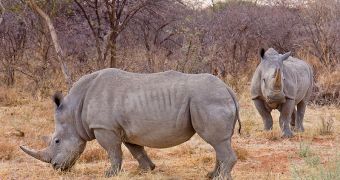Scientists at the University of Cambridge say that many of the large animals that went extinct over the past 100,000 years or so were primarily killed off by a combination of climate change and human activity. Very few such creatures remain today.
Elephants and rhinoceroses are good example of large animals that managed to endure, but countless others weren't so lucky. The last 100 millennia were not very kind on these large beasts, experts say.
In a new paper describing the research, published in the March 5 issue of the esteemed journal Proceedings of the National Academy of Sciences (PNAS), Cambridge investigators found that pressure from humans joined with that of climate change to create a killer situation for large animals.
Experts focused their attention on the late Quaternary period, which began 700,000 year ago, but mostly on the last 100,000 years. They paid close attention to all small-scale extinction events that occurred during this interval.
Through this approach, they were able to estimate the extent to which various factors affected the demise of the animals in question. They focused on terrestrial megafauna, defined for the purpose of this investigation as land-based animals heavier than 44 kilograms (97 pounds).
Some of the most iconic species that were lost include mammoths, mastodons, giant sloths, woolly rhinos, giant kangaroos and wombats, and the giant flightless birds called moas, of New Zealand.
By correlating known data of human migration patterns at the time with information collected from ice core samples retrieved from Antarctica, the team was able to determine that the advent of the last Ice Age, coupled with competition from humans, is largely what doomed these creatures.
“The loss of these animals has been a zoological puzzle since the time of Charles Darwin and Alfred Russel Wallace. At that time, many people didn’t believe that human-caused extinctions were possible, but Wallace argued otherwise,” says David Williams.
The expert holds an appointment as a PhD student at the university. He was also one of the co-authors on the PNAS paper.
“We have now shown, 100 years later, that he was right, and that humans, combined with climate change have been affecting other species for tens of thousands of years and continue to do so. Hopefully, now though, we are in a position to do something about it,” he concludes.

 14 DAY TRIAL //
14 DAY TRIAL //